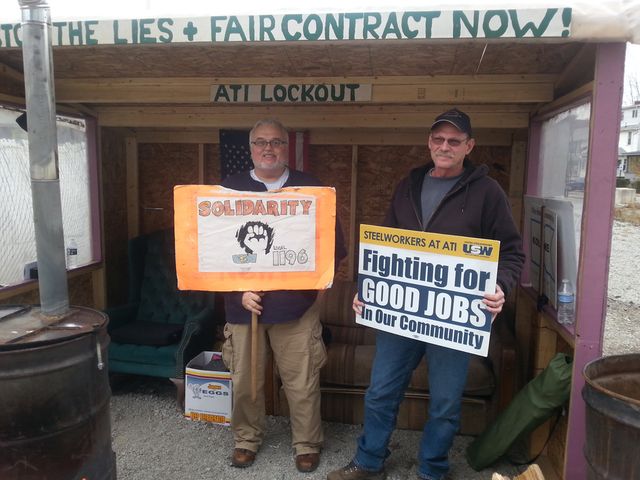Johannes Stern
Just days after the German government announced it was deploying tornado aircraft, a warship, a tanker plane and satellite technology for combat operations in Syria, the extent and costs of the military mission are becoming increasingly clear.
On Sunday, in a two-page interview with Bild am Sonntag, under the martial headline “Germany’s top general declares war,” General Volker Wieker revealed that Germany would send at least 1,200 troops to Syria. Wieker said that while the “final decision” on the number of soldiers to be included in the mandate had not yet been made, “from a military point of view… about 1,200 servicemen and women will be necessary for the operation of the aircraft and ships.”
On Monday, ARD News reported that a joint cabinet submission by Foreign Minister Frank-Walter Steinmeier (Social Democratic Party—SPD) and Defence Minister Ursula von der Leyen (Christian Democratic Union—CDU) specified “the area of operation as the Persian Gulf, the Red Sea and adjacent sea area,” while leaving room for “a possible expansion of the mission.” The 16-page text, expected to be approved today by the cabinet, put the cost of the operation at 134 million euros.
This makes the operation in Syria the largest and second most expensive foreign deployment in the history of the Bundeswehr (the post-World War II German armed forces), without even considering likely increases once the deployment begins. As part of NATO missions in Afghanistan and Kosovo, 996 and 907 German soldiers are currently deployed in those countries, respectively.
For the Bundeswehr missions abroad, the Defence Ministry has estimated costs in 2015 of 460 million euros, 263.2 million of which are for Afghanistan. Almost overnight, and without any public debate, a combat intervention has been set in motion whose consequences and final extent are unknown.
There is an additional ominous aspect of the interview with Wieker. Seventy years after the end of World War II, the constitutionally enshrined principle of the primacy of the civilian authorities over the military is being upended. As in the Kaiser’s Empire and under the Nazis, the German military is once again playing a central role in the drafting of German foreign and war policy.
In introducing the interview with Wieker, the Bild am Sonntag reported that “Germany’s highest-ranking soldier,” in “his office in the Defence Ministry,” was planning “combat missions against ISIS.” In the interview, Wieker at several points explicitly expressed himself politically. The newspaper wrote that the general, when asked “how long the Bundeswehr would be involved in the Syria operation,” declared that while the politicians would decide “the duration,” the Bundeswehr was “militarily self-sustaining.”
Wieker spoke explicitly in favour of deploying ground forces in Syria and announced a massive rearmament of the Bundeswehr. He said ISIS could “certainly not” be defeated simply with air strikes and added that the “best suited troops” for the fight on the ground were those with a “high motivation to defend their own country.” From a “military point of view,” he continued, “everything that attacks ISIS” was beneficial.
At the end of the interview, the general announced, “Employing about 5.6 billion euros, we will invest heavily in the coming years in the improvement of the operational readiness of the Bundeswehr.” Some 650 measures had already been initiated and many of them would show “lasting effect in 2017,” he added.
He said the “operational readiness” of the main battle tanks and armoured transport vehicles, ships and submarines, and Tornadoes, Euro fighters and transport aircraft had been improved, but the situation with respect to helicopters was “still not satisfactory.”
Monday’s cabinet decision was accompanied by a veritable war hysteria on the part of prominent politicians and the media. Von der Leyen published a so-called “Six-Point Plan Against ISIS” in the Bild. In it, she declared that Germany and “everyone in the Alliance” had to show “military strength” and “weaken ISIS, limit its range of movement, destroy its training camps, recapture towns one by one, cut off ISIS’ oil revenues, and break its aura of invincibility.”
To achieve those goals, a “temporary political marriage of convenience” was needed. “The fight against ISIS must be a top priority,” wrote von der Leyen, “for France as well as for the US, China, Russia, Turkey, Iran, the Arab states and us.” This meant that, “air strikes must be clearly directed against ISIS, not against the opponents of the dictator Assad, who terrorizes his people with barrel bombs.”
In the name of the fight against ISIS, Germany is pursuing a strategy of bringing all the powers to the table to install a puppet regime in Syria, which would allow Berlin to advance its geo-strategic and economic interests throughout the Middle East.
The German generals, politicians and newspaper hacks who beat the drum for a massive German intervention in Syria know well the crimes they are preparing. Stefan Kornelius of the Süddeutsche Zeitung declared Sunday on the ARD “Press Club” program that the intervention in Syria would “not be a clean story” that would produce “moral laurels.”
He gave free rein to his dreams of a new round of German colonial policy. Kornelius declared that the withdrawal of Western troops from Afghanistan was a mistake. He said the reorganization of Syria would take “an incredibly long time” and would be “incredibly expensive,” noting that nation-building was “a matter of decades, not a few years.”
On Monday, the editor of Die Welt, Stefan Aust, who, following the attacks in Paris, called for a “global war on terror,” published an apocalyptic article on the likely outcome of the escalating war in Syria. He wrote of a new “Thirty Years’ War in the Middle East,” and prophesied, “Maybe the year 2015 now coming to an end will go down in history like the last summer of peace in 1913 or the equally desperate and unsuccessful attempt at appeasement before the [second] great conflagration erupted.”
